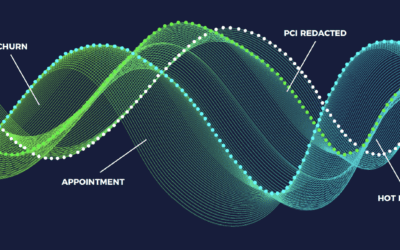In this day and age, where customers readily switch brands in order to get the experience they want, forward-thinking companies know they need to find a way to make themselves stand apart from the competition.
Contact centers are on the front lines of shaping a customer’s experience, which gives them the perfect platform to enact predictive analytics in order to improve customer satisfaction, loyalty and retention. By analyzing the customer-agent interaction, you’ll be able to understand how to deliver a positive customer experience, which products and services are they most interested in, and what roadblocks are customers running into that downgrade their experience.
Continuously upgrading with new technology is an objective that every call center should strive to accomplish. However, to stay on top of the game, it’s important to keep track of the latest solutions while also focusing on evolving customer expectations.
Dig further into this topic by joining us at LeadsCon Las Vegas, for a session by the same name, Wed March 22, 11:30am.
TRENDS IN CALL CENTER ANALYTICS
Voice Analytics
Voice analytics is the process of analyzing recorded calls to gather information that may be relevant to a business process. However, there are a number of industry “claims” about voice analytics such as 99% accuracy at detecting events, identifying compliance violations and complaints, a self-driven QA solution, and 85% speech-to-text accuracy which can be difficult to discern fact from friction unless you know where to look.
Research has absolutely shown that voice analysis when limited to variables such as pitch, energy and volume are not a valid predictor of empathy, sentiment, or certain complex events. Without taking into context the actual words that were spoken, the best machine learning techniques will struggle to predict human emotion. This is one of the reasons VoiceBase utilizes deep learning speech recognition as well as energy, pitch and volume as just a few of many variables when determining a customer’s intent in a recording.
Manual Review
Currently, speech-to-text transcription still struggles to reach the same level of accuracy as humans. However, speech analytics and predictive analytics based on spoken information are gaining momentum as they utilize machine learning to detect more complex events and emulate a human’s results. Call centers aren’t looking for a readable transcript a few days after a call, they are looking for an immediate alert to a sale, an upset customer, an up sell opportunity or an appointment made. This is what predictive analytics can deliver when you marry speech analytics, machine learning, and initial human tagging.

The best way to ensure the highest accuracy in call center analytics is by using human analysts to manually review and tag agent-customer interactions and then use this data to train a machine learning algorithm to emulate the human scorer’s technique in order to detect complex events faster, consistently and at scale.
HOW PREDICTIVE ANALYTICS WORKS
LEARN MORE AT LEADSCON 2017
Understanding where processes are failing your customers and what you can do to fix them is imperative if you want to reduce costs and improve your business. To transform agent performance and improve customer experience in your call center, we recommend combining both speech analytics and manual reviews to get the best of both worlds.
To learn more about this topic in particular, join Walter Bachtiger, the CEO of VoiceBase, and Ryan Stomel, the CEO of CallCriteria, at 11:35 AM on Wednesday, March 22nd at LeadsCon Las Vegas.


